The Beatles' Red and Blue albums: Official Classics
As the classic, groundbreaking Beatles greatest hits packages receive a 50th anniversary reissue, we discuss what make the 1973 albums a pair of Official Classics.
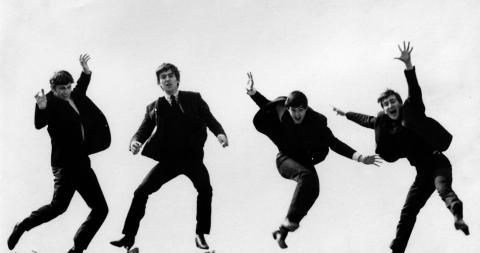
The Beatles' first greatest hits, befitting a band of their stature, was split into two parts, representing two very different eras of their career.
These two albums, the 'Red' album (covering 1962 -1966) and the 'Blue' album (covering the more experimental period of 1967 - 1970) was a big factor in the enduring popularity of the band, years after their split (having first been issued three years after the legendary band split up in 1970) and have the Official Chart history to prove it.
The Red and Blue albums peaked at Number 3 and Number 2 respectively on the Official Albums Charts and have, to date, spent 88 weeks and 90 weeks in the UK’s Official Albums Top 40 respectively.
With a very exciting re-release on the horizon, now is the perfect time to re-visit the legacy of the Beatles' first greatest hits compilation, and why they are so deserving of Official Classic status.
What makes The Beatles' Red and Blue albums Official Classics?
Greatest hits albums were a new concept in 1973; up until that point, artists’ music was available pretty much exclusively through singles and studio albums, with no compilations available to gather all the best material from an act's career together in one place.
The Beatles had certainly never had an officially sanctioned hits release and the importance of these albums should not be under-estimated. Rolling Stone magazine described the albums as a “gateway drug into the Beatles songbook” and, indeed, they defined how the band were viewed for many years; from the track selection to the lyric sheets, discography, and much more.
For an entire generation, pre-internet and streaming services, with many of the band’s studio albums either unavailable at your local record shop, or simply too expensive (The Beatles catalogue was rarely discounted in the 20-30 years following their split), these albums were The Beatles - in an echo of the famous Alan Partridge joke, the Red and the Blue albums ensured that for many music fans of the Seventies, Eighties and beyond, their favourite Beatles album was, “the best of the Beatles”.
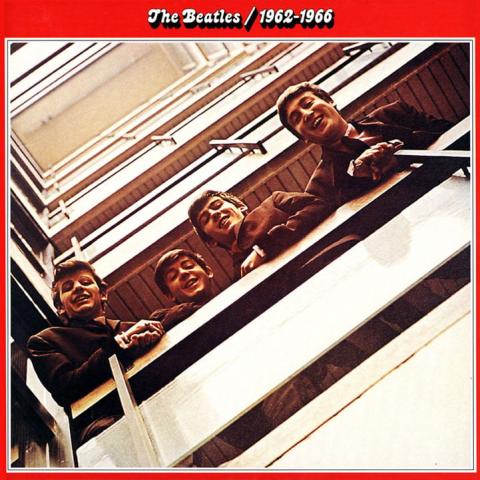
Why are the Red and Blue albums still relevant today?
The iconic packages are being re-released this month (on Friday November 10), in the 50th anniversary year of their initial release. Remastered for the first time, they are offered across a range of formats, including streaming, download, CD and vinyl. The key formats are:
- 1962-1966 (2023 Edition) - 2CD: stereo / Digital + Streaming: stereo & Dolby Atmos – 38 tracks.
- 1967-1970 (2023 Edition) - 2CD: stereo / Digital + Streaming: stereo & Dolby Atmos – 37 tracks
- 1962-1966 & 1967-1970 (2023 Editions) 4CD slip-cased set - ‘Red’: CDs 1 & 2 / ‘Blue’: CDs 3 & 4 – all 75 tracks.
- 1962-1966 + 1967-1970 (2023 EDITIONS) 6LP vinyl slip-cased set - 1962-1966: LPs 1-3 / 1967-1970: LPs 4-6 – all 75 tracks
The reissues also coincide with the release of the “last Beatles single” Now & Then, which is coupled with Love Me Do as a double a-side release. Stereo mixed, the single will be available in 7-inch black & coloured vinyl (light blue, clear), 12-inch black vinyl and a selection of limited edition Beatles Store exclusives, a cassette, 7-inch and blue & white marbled vinyl.
In short, as the success of Now and Then on the Official Singles Chart has proved, the Beatles are a group that transcend socio-political context for their work, with their material still appealing to as many people in the age of streaming as it did in the age of the album. The Red and Blue albums, as their first greatest hits collection, are demonstrative of this.
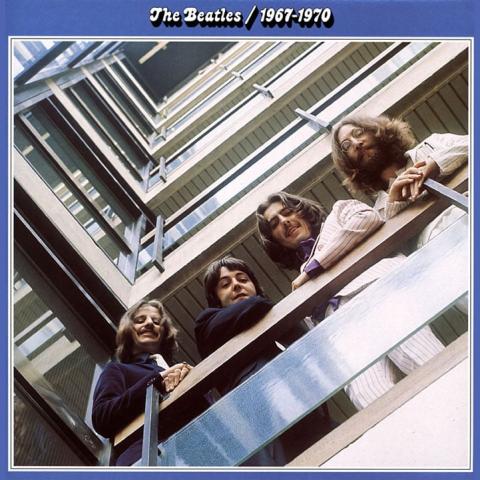
Five facts about the Red and Blue albums
1. The 2023 re-issue comes at a landmark moment. Besides celebrating the 50th anniversary of the two albums’ original releases, they form part of a Beatles repromotion including a brand new Beatles song. Now And Then (which has been added to the releases) is written and sung by John Lennon, was developed and worked on by Paul McCartney, George Harrison and Ringo Starr, and finally finished in 2023 by Paul and Ringo. It is not the first post-Beatles release – the Anthologies albums were accompanied by the release of two “new” tracks which similarly used new technology to bring the band back into being, Free As A Bird and Real Love.
2. Historically, the Blue album (spanning the latter years of the Beatles) has proved to be marginally the most popular of the two packages, achieving higher chart positions and higher sales than it’s Red counterpart. It is also longer of the two packages (based on its original release), Blue running to 99 minutes and 40 seconds, Red running to 62 minutes, 34 seconds.
3. On first release, the two albums comprised 54 tracks between them, the vast majority of them Lennon and McCartney compositions and featuring a few surprise tracks, including the likes of Old Brown Shoe and Ringo’s Octopus’s Garden. But it was not considered a perfect selection, Harrison himself even remarking that he thought the tracklistings to be “incomplete”. Indeed, there were just two tracks from Revolver, and no room for the likes of Taxman, Dear Prudence, Here There & Everywhere, among others. Much of this is put right in the new reissue, with an extra 21 tracks added to create a new track-listing of 75 tracks – including, of course, the last Beatles single Now And Then.
4. The covers of the two albums’ form are an important part of their legendary iconography. The sleeve of the Red album features the Fab Four looking down through the stairwell of what was then their label EMI’s headquarters in Manchester Square, London. It was taken around the time of Please Please Me’s release by photographer Angus McBean in 1963 - and, in 1969, The Beatles asked McBean to recreate the shot, with the intention of using it for their planned Get Back album. That album (of course) was never released, tracks from the session instead becoming part of the 1970 release Let It Be. As a result, the new picture never saw the light of day – until the Red and Blue albums were conceived and the obvious opportunity to use the two images emerged. Since then, the image has been routinely copied, especially by other artists signed through the EMI family. EMI remained headquartered at the historic Manchester Square offices until 1999, moving to Brook Green in Hammersmith – and took the famous stair handrail with them. It subsequently then moved to Wrights Lane in Kensington (where Warner Music, who know own the Beatles licence), but is believed to know be owned by Paul McCartney himself.
5. While Red and Blue were the very first Beatles hits packages, the band have since been the subject of a number of additional hits releases, including Live At The BBC (1994) Anthologies 1, 2 and 3 (1995/6) and 2006’s Love (accompanying the Cirque Du Soleil live production). But the daddy of them all is 1 - released in 2000, in an era when album sales were reaching an all-time peak worldwide, 1 remains the band’s biggest selling hits album. Marking the 30th anniversary of the band’s split, it included every number 1 singles in the UK and US and is widely said to have sold more than 30m copies worldwide, and is currently approaching 4m sales in the UK.
WATCH the music video for The Beatles' 'last' song Now and Then below
MORE: Every UK Number 1 single by The Beatles
Liner notes
The involvement of the band’s manager Allan Klein in the creation of the two albums is a matter of legend. The band’s estranged representative (who took over as manager after the tragic death of their first, Brian Epstein, in August 1967) conceived the new releases, realising that (now they had disbanded) he had to find new ways of generating income from the band’s legacy. Having already overseen Hot Rocks in 1971 (a collection of tracks by another of his acts, the Rolling Stones) and seen how popular bootleg releases of the Beatles former hits had become (particularly a set called Alpha Omega Volumes I & II, which had been TV advertised in the US), he recognised the value of a legitimate hits package and created the red and the blue.
How supportive the Beatles themselves were certainly remains unclear, all of them showing a distinct reluctance to comment at the time. Rolling Stone magazine reports an EMI executive suggesting that Klein “exceeded his power” in pulling the albums together. Subsequently, Lennon grudgingly admitted to listening to the records, but considered the sound to be ‘rough’, McCartney two years later said he hadn’t bothered with them. In reality, though, the two albums were probably the greatest single contribution to the Beatles’ legacy which Klein ever delivered. In a twist to this tale however, on the day the albums were released on April 2 1973, John and Yoko held a press conference in New York to announce that Klein had been fired as the band’s manager.
Further listening
Well, it very much depends on whether you prefer the sounds of the Red or the Blue albums. If you prefer Red, check out their earlier albums, Rubber Soul and Revolver being the most revered of their first half of the band's career – if you err towards Blue, Sgt Pepper’s Lonely Hearts Club Band and The Beatles (widely known as The White Album) are arguably the best starting points. That said, there are few low points across the entire Fab catalogue, which comprises 13 studio albums in seven years.
Image: Getty
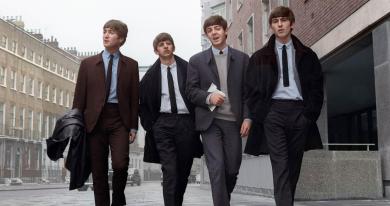

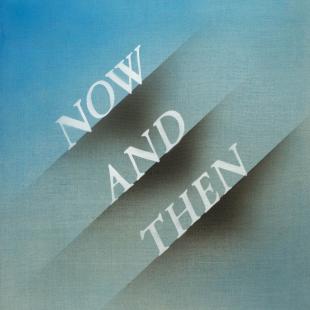

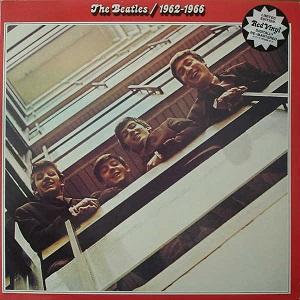
Join the conversation by joining the Official Charts community and dropping comment.
Already registered?
Log in
No account?
Register
Q
Quiverbow
Neither 'Red' nor 'Blue' are their first greatest hits release, as EMI issued 'A Collection Of Beatles Oldies' in December 1966 that reached #7 in the charts.
You even list it on the page devoted to their singles and album releases. Very poor research by the author.
Bengy
Can we have sales from 1994 to present recorded in the OCC database for the Red and Blue albums?